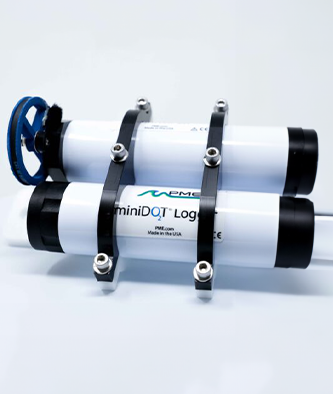C-FLUOR LOGGER
Viral contamination in shellfish growing areas during normal harvesting periods and following wastewater overflows in an urban estuary with complex hydrography
2024 - Campos Carlos
Joanne Hewitt
Pradip Gyawali
Knowledge of the dispersive characteristics and time of travel of microbiological contamination is a key consideration in determining impacts on shellfish growing areas following wastewater overflows. In this study, norovirus genogroup I and II, indicators of viral contamination (F-RNA bacteriophage genogroup II (F-RNA GII), crAssphage, pepper mild mottle virus) and Escherichia coli were monitored during periods of normal harvesting and following overflows in two commercial shellfish growing areas in Otago Harbour (Aotearoa New Zealand).
Knowledge of the dispersive characteristics and time of travel of microbiological contamination is a key consideration in determining impacts on shellfish growing areas following wastewater overflows. In this study, norovirus genogroup I and II, indicators of viral contamination (F-RNA bacteriophage genogroup II (F-RNA GII), crAssphage, pepper mild mottle virus) and Escherichia coli were monitored during periods of normal harvesting and following overflows in two commercial shellfish growing areas in Otago Harbour (Aotearoa New Zealand).
Study of Shellfish Growing Area During Normal Harvesting Periods and Following Wastewater Overflows in an Urban Estuary With Complex Hydrography
2024 - Carlos J. A. Campos, Pradip Gyawali & Joanne Hewitt
Viral testing combined with hydrographic studies is considered standard good practice in determining microbiological impacts on shellfish growing areas following wastewater overflows. In this study, norovirus genogroup I and II, indicators of viral contamination (F-RNA bacteriophage genogroup II (F-RNA GII), crAssphage, pepper mild mottle virus) and Escherichia coli were monitored during periods of normal harvesting and following overflows in two commercial shellfish growing areas in Otago Harbour (Aotearoa New Zealand).
Viral testing combined with hydrographic studies is considered standard good practice in determining microbiological impacts on shellfish growing areas following wastewater overflows. In this study, norovirus genogroup I and II, indicators of viral contamination (F-RNA bacteriophage genogroup II (F-RNA GII), crAssphage, pepper mild mottle virus) and Escherichia coli were monitored during periods of normal harvesting and following overflows in two commercial shellfish growing areas in Otago Harbour (Aotearoa New Zealand).
Dinophysis acuminata or Dinophysis acuta: What Makes the Difference in Highly Stratified Fjords?
2023 - Ángela M. Baldrich, Patricio A. Díaz, Gonzalo Álvarez, Iván Pérez-Santos, Camila Schwerter, Manuel Díaz, Michael Araya, María Gabriela Nieves,Camilo Rodríguez-Villegas, Facundo Barrera, Concepción Fernández-Pena, Sara Arenas-Uribe, Pilar Navarro, Beatriz Reguera
Dinophysis acuminata and D. acuta, which follows it seasonally, are the main producers of lipophilic toxins in temperate coastal waters, including Southern Chile. Strains of the two species differ in their toxin profiles and impacts on shellfish resources. D. acuta is considered the major cause of diarrhetic shellfish poisoning (DSP) outbreaks in Southern Chile, but there is uncertainty about the toxicity of D. acuminata, and little information on microscale oceanographic conditions promoting their blooms.
Dinophysis acuminata and D. acuta, which follows it seasonally, are the main producers of lipophilic toxins in temperate coastal waters, including Southern Chile. Strains of the two species differ in their toxin profiles and impacts on shellfish resources. D. acuta is considered the major cause of diarrhetic shellfish poisoning (DSP) outbreaks in Southern Chile, but there is uncertainty about the toxicity of D. acuminata, and little information on microscale oceanographic conditions promoting their blooms.
An advanced towed CTD chain for physical-biological high resolution in situ upper ocean measurements
2023 - Thomas Kock, Burkard Baschek, Florian Wobbe, Martina Heineke, Rolf Riethmueller, Stephan C. Deschner, Gerd Seidel, Paulo H. R. Calil
Submesoscale eddies, fronts, and filaments are ubiquitous in the upper ocean and play an important role in biogeochemical and mixing processes as well as in the energy budget. To capture the high spatial variability of submesoscale processes, it is desirable to simultaneously resolve the vertical and horizontal gradients of hydrographic properties on scales of 10 m to 10 km. We present a revised towed CTD chain, for rapid quasi-synoptic in situ measurements of submesoscale oceanographic features, that is lighter, more robust and scientifically more useful than previous towed CTD chains.
Submesoscale eddies, fronts, and filaments are ubiquitous in the upper ocean and play an important role in biogeochemical and mixing processes as well as in the energy budget. To capture the high spatial variability of submesoscale processes, it is desirable to simultaneously resolve the vertical and horizontal gradients of hydrographic properties on scales of 10 m to 10 km. We present a revised towed CTD chain, for rapid quasi-synoptic in situ measurements of submesoscale oceanographic features, that is lighter, more robust and scientifically more useful than previous towed CTD chains.
Monitoring multiple parameters in complex water scenarios using a low-cost open-source data acquisition platform
2023 - Steven Martinez Vargas, Alejandro J. Vitale, Sibila A. Genchi, Simón F. Nogueira, Andrés H. Arias, Gerardo M.E. Perillo, Agustín Siben, Claudio A. Delrieux
Water monitoring faces challenges that are driven by the infrastructure, protection, financial resources, science and innovation policies, among others. A modular, low-cost, fully open-source and small-sized Unmanned Surface Vessel (USV) called EMAC-USV (EMAC: Estación de Monitoreo Ambiental Costero), is proposed for monitoring bathymetry and water quality parameters (i.e. temperature, suspended solids concentration and hydrocarbon concentration) in complex water scenarios. A detailed description of each part of the platform as well as all electronic connections and functioning is presented.
Water monitoring faces challenges that are driven by the infrastructure, protection, financial resources, science and innovation policies, among others. A modular, low-cost, fully open-source and small-sized Unmanned Surface Vessel (USV) called EMAC-USV (EMAC: Estación de Monitoreo Ambiental Costero), is proposed for monitoring bathymetry and water quality parameters (i.e. temperature, suspended solids concentration and hydrocarbon concentration) in complex water scenarios. A detailed description of each part of the platform as well as all electronic connections and functioning is presented.


